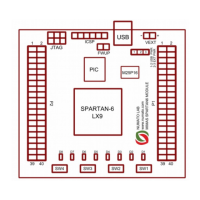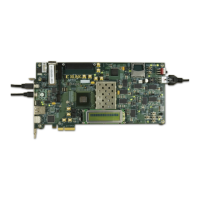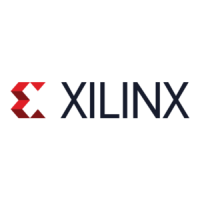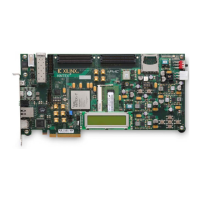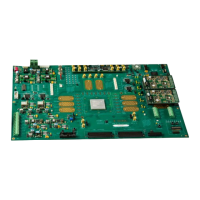Spartan-6 FPGA PCB Design and Pin Planning www.xilinx.com 37
UG393 (v1.1) April 29, 2010
Troubleshooting
Optimum Decoupling Network Design
If a highly optimized PDS is needed, measurements and simulations of a prototype system
can inform the PDS design. Using knowledge of the noise spectrum generated by the
prototype system along with knowledge of the system’s power system impedance, the
unique transient current of the design can be determined and accommodated.
To measure the noise spectrum of the design under operating conditions, use either a
spectrum analyzer or an oscilloscope with FFT. The power system impedance can be
determined either through direct measurement or simulation, or a combination of these
two as there are often many variables and unknowns.
Both the noise spectrum and the impedance are functions of frequency. By examining the
quotient of these per frequency point, transient current as a function of frequency is
computed (Equation 2-7):
Equation 2-7
Using the data sheet’s maximum voltage ripple value, the impedance value needed at all
frequencies can be determined. This yields a target impedance as a function of frequency.
A specially designed capacitor network can accommodate the specific design’s transient
current.
Troubleshooting
In some cases the proper design work is done up-front, but noise problems still exist. This
next section describes possible issues and suggested resolution methods.
Possibility 1: Excessive Noise from Other Devices on the PCB
Sometimes ground and/or power planes are shared among many devices, and noise from
an inadequately decoupled device affects the PDS at other devices. Common causes of this
noise are:
• RAM interfaces with inherently high-transient current demands resulting either from
temporary periodic contention or high-current drivers
• Large ASICs
When unacceptable amounts of noise are measured locally at these devices, the local PDS
and the component decoupling networks should be analyzed.
Possibility 2: Parasitic Inductance of Planes, Vias, or Connecting Traces
Sometimes the decoupling network capacitance is adequate, but there is too much
inductance in the path from the capacitors to the FPGA.
Possible causes are:
• Wrong decoupling capacitor connecting-trace geometry or solder-land geometry
• The path from the capacitors to the FPGA is too long
- and/or -
• A current path in the power vias traverses an exceptionally thick PCB stackup.
For inadequate connecting trace geometry and capacitor land geometry, review the loop
inductance of the current path. If the vias for a decoupling capacitor are spaced a few
If()
Vf()From Spectrum Analyzer
Zf()From Network Analyzer
-------------------------------------------------------------------------------------=
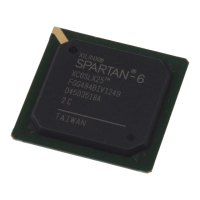
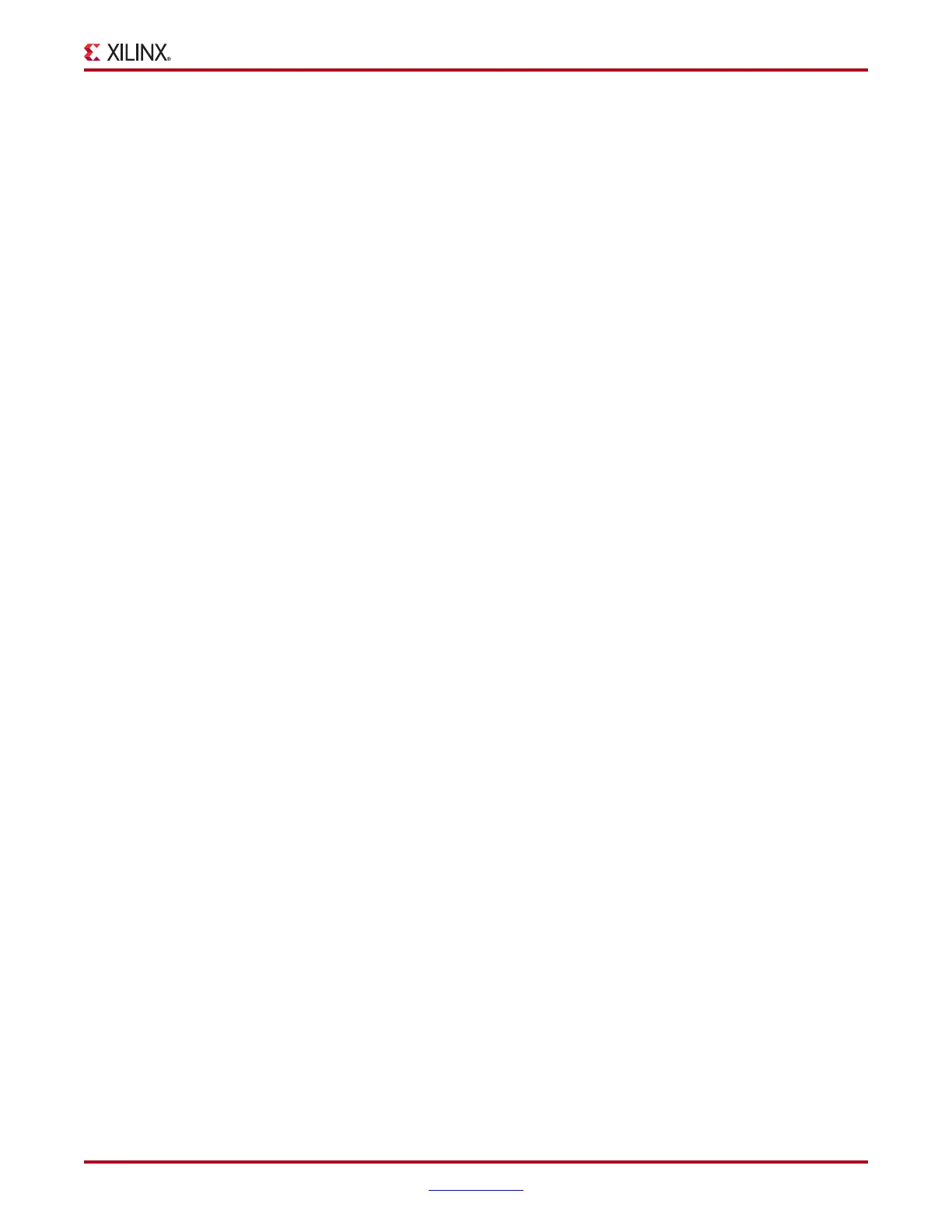